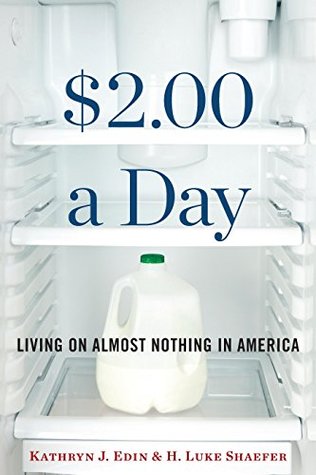More on this book
Community
Kindle Notes & Highlights
Read between
December 4 - December 10, 2019
In early 2011, 1.5 million households with roughly 3 million children were surviving on cash incomes of no more than $2 per person, per day in any given month.
None of the people whose stories appear in this book see a handout from the government—the kind that the old system provided prior to welfare reform—as a solution to their plight.
Instead, what they want more than anything else is the chance to work.
Out of every one hundred Americans, fewer than two get aid from today’s cash welfare program. Just 27 percent of poor families with children participate.
There are more avid
postage stamp collectors in the United States than we...
This highlight has been truncated due to consecutive passage length restrictions.
Ellwood and his colleague Mary Jo Bane released a study in 1983 showing that the typical welfare spell lasted less than two years.
In just a few years, the federal government would be spending many billions of dollars more on the EITC—to aid workers—than it ever had on AFDC.
the new block grant structure essentially capped funding for the program, so a state couldn’t be expected to provide assistance if the cost exceeded its allotment.
Few families in $2-a-day poverty are chronically disconnected from the workforce. Rather, most of them are workers who fall into extreme poverty only when they can’t manage to find or keep a job.
roughly 70 percent of children who experienced a spell of $2-a-day poverty in 2012 lived with an adult who held a job at some point during the year.
when a new Walmart opens in a community, it causes an overall loss in jobs in that community because other stores—including some that might pay better or offer stable hours—can’t compete.
Today there is no state in the Union in which a family that is supported by a full-time, minimum-wage worker can afford a two-bedroom apartment at fair market rent without being cost burdened, according to HUD.
Between 1990 and 2013, rents rose faster than inflation in virtually every region of the country and in cities, suburbs, and rural areas alike.
any response to the rise in $2-a-day poverty must be in line with America’s values.
In no state today does a full-time job paying minimum wage allow a family to afford a one- or two-bedroom apartment at fair market rent.
But a family with a full-time earner making $15 an hour can afford a two-bedroom apartment at the fair market rent in twenty-two states and can come very close in another four.
Too often, America has gone down the road of trying to shame those in need.


